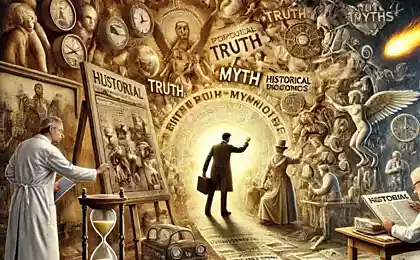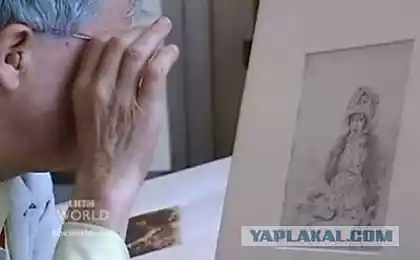1042
Myths and Realities of the Renaissance
Myths and Realities of the Renaissance
Everything happened quite differently, as we were told.
When we hear the word "Renaissance", the imagination immediately draws a bright image of the Creator, easily and naturally created a masterpiece and ingenious inventions. But in fact, it was not exactly, or even not so.
The popular blogger Jay Wisniewski decided to find out how it all happened. His article on the subject, of course, is not an art history treatise, and does not claim to ultimate truth, but makes a lot to look at from a different angle.
The revival did not begin because of the discovery of antiquity

Myth
Renaissance began in the XV century, because at this time, people rediscovered Plato, Socrates and Aristotle - and boom! It was then, and they wanted to adopt, and update all the old ideas. All thanks to the power of reading and knowledge.
Reality
The first Latin translations of classical works were made at the end of the VIII century at the court of Charlemagne. Over the next few centuries, Italian and French scholars translated Arabic and Greek texts on philosophy, mathematics and medicine. Thus, to the XII century in Western Europe, students have access to a fairly extensive collection of knowledge - not Google, of course, but much more than it may seem.
However, if the ancient knowledge was already available, why Renaissance did not happen much earlier?
And it happened. Twice. Carolingian Renaissance and Revival of the XII century took place long before the Renaissance, although they are included in the history books only as a footnote. Why is that? Just because they did not have that one, which made an outstanding Renaissance - beautiful trousers significant advance in the field of art. The reason was simple: lack of money.
But by the end of the Middle Ages Florence had pockets full of coins, thanks to the textile industry. By XV century Florence was like on Wall Street before the market crash, people became rich not because of the constant work, but simply because of the ability to invest their earnings in different enterprises. Merchants and bankers had power over everything - until you call the rain. They also have had something completely new for humanity at this stage: they have some free time.
To fill the void, they looked around and, in the absence of the Internet, decided to turn his benevolent gaze of art. Sculptures, paintings and frescoes began to enjoy greater demand than ever was, and artists have become wildly popular. Knowledge of antiquity began again in demand - because there was a need to create paintings with lots of naked women and other beauties. Thus, the Renaissance did not open the antiquity, but only has used her knowledge and ideas, already known previously.
The Renaissance did not seek to restore and preserve the monuments of the past
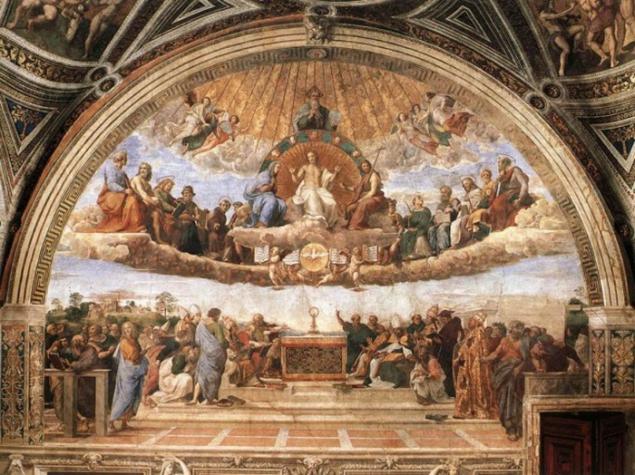
Myth
It is incredible how many old monuments and buildings in Italy have withstood the test of time. Without a doubt, largely due to the Renaissance, which struggled to keep all the ancient monuments ... Right?
Reality
At the time of the Renaissance scientists were busy searching for rare classical texts, builders and architects were destroying the places where they were written. The buildings were destroyed in order to use the stone for new projects. Some of them are simply demolished to make room. Countless ancient marble statues were melted down in order to get the lime. Too difficult it was to buy and bring new materials when such useless old ruins, Temple of Hercules, or the Coliseum, just standing there and begs themselves be looted. Of course, for us they are priceless relics of the past, but for the residents of those times it was just a huge derelict slums, from which you could still pull off something for their buildings.
Not only pagan but Christian monuments fell victim to a new era: standing for 1,200 years, St. Peter's Basilica was destroyed to its place was built a new cathedral. And there, by the way, it was used stones taken from the ruins of the Colosseum.
The Renaissance was not a peaceful era
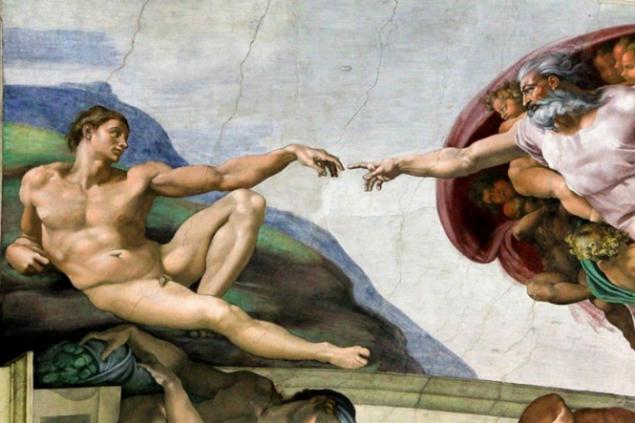
Myth
The Renaissance was an age of painting, music, cherubs and funny beards. This was the era hipsters. And no one is more peace and quiet than hipster, steeped in art, is not it?
Reality
As long as the masters of the Renaissance painted cathedrals and created masterpieces, Vlad Dracula peaks graced the heads of their enemies. And he is hardly an exception: England has lost more than 100 000 lives in a dispute over who will be the new king. Venice and everything east of it spent a century to fight the Ottoman Empire. Germany solidly worn out in knightly revolution, then the peasant revolution - if you put them together, you get so much of terror and bloodshed that the French seem a revolt in the village of Smurfs.
Beginning in 1494, Italy was the place where the war with the participation of all major Western European powers did not cease within 60 years. To cope with increasing duration, frequency and intensity of these wars, the European leaders have started to create a permanent army, which contributed to a further increase in their duration, frequency and intensity. Prior to 1500 the average army had 15,000 soldiers, and the end of the XVI century this number has increased 5 times.
Rome of the Renaissance was not a magnificent cultural center

Myth
It must have been a Renaissance Rome to a truly spectacular sight. And if science finally hasten the creation of a time machine, we'll all go back only to be photographed against the background of all this artistic radiance and fill enthusiastic instagram hashtag.
Reality
Want to know how Rome looked the Renaissance? About how modern Urjupinsk. At that time, as the northern territories of Italy flourished thanks to the inflow of wealthy merchants and artisans, Rome depopulated and turned into a wasteland with a rapidly growing population of offenders. When the Pope left Rome in the 1300s for a nice residence in France, things went awry. After all, throughout the city relied on him to his influence, treasury, security, not to mention the pilgrims and tourists who made generous donations to the Holy One. Rome needed the return of the Pope, but dogmatic and political differences did not allow the pontiff to do so until the beginning of the Renaissance. It is understood that the city was at that time in a deplorable state.
In the midst of Renaissance Rome's population has fallen to disastrously low: only 10,000 inhabitants against a million in the past. Ultimately, the city has returned to its former glory, but it was not exactly in the Renaissance. When the Pope returned to Rome, he found a post-apocalyptic spectacle of cows grazed in the Forum, and at the Hippodrome Circus Maximus can be seen only race of sheep. Saints church were abandoned. Worst of all, the famous sewer system of ancient Rome had been completely destroyed during the attacks of barbarian tribes, so the smell in the Eternal City was very specific.
The Renaissance was a century of enlightened thinkers
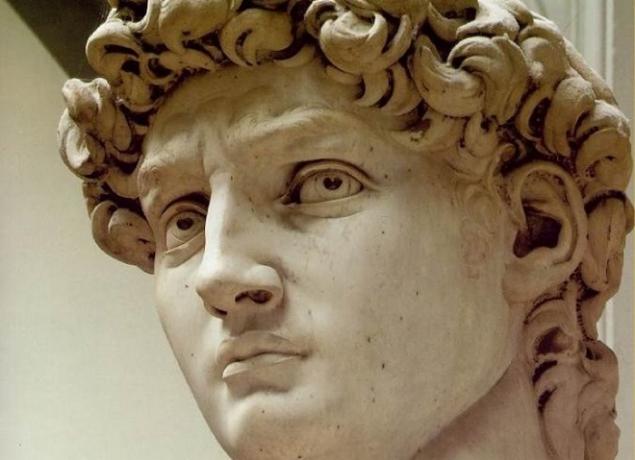
Myth
After stinking superstitious Middle Ages Renaissance was a breath of fresh air breath of rational, scientific, wind, where before everything just breathed fire and battle.
Reality
Renaissance Europe resembled a drunken liberal arts college that never heard about any "natural philosophy." Science historians say that the Renaissance almost took a step back in comparison with the more scientifically oriented Middle Ages. They were all too busy with art and fast life, to pay attention to such a boring and mundane things as normal science.
Virtually all Western occult tradition originate from the Renaissance. At this time, all kinds of ghost hunters were not clowns, and university professors. A whole generation of scientists practiced and taught astrology, necromancy, alchemy and spiritualism.
But this does not mean that magic in the Renaissance encouraged. Wizards killed in the previous century, but Renaissance has brought three waves of amplification witch-hunt them these waves killed thousands of people across Europe. Historians say that the number of persecuted witches' enlightened era "varies between 50 000 and 200 000.
However, do not blame the witch hunters. They just follow the instructions - the famous "Hammer of Witches", which can be attributed at least part of the responsibility for the genocide. After all, the Internet era was the printing press and printed on it is not only the Bible and scientific books. Prints that evoked public interest: what do you think it sounds exciting - "Nicomachean Ethics" or "Hammer of Witches"? The answer is quite obvious.
©
Everything happened quite differently, as we were told.
When we hear the word "Renaissance", the imagination immediately draws a bright image of the Creator, easily and naturally created a masterpiece and ingenious inventions. But in fact, it was not exactly, or even not so.
The popular blogger Jay Wisniewski decided to find out how it all happened. His article on the subject, of course, is not an art history treatise, and does not claim to ultimate truth, but makes a lot to look at from a different angle.
The revival did not begin because of the discovery of antiquity

Myth
Renaissance began in the XV century, because at this time, people rediscovered Plato, Socrates and Aristotle - and boom! It was then, and they wanted to adopt, and update all the old ideas. All thanks to the power of reading and knowledge.
Reality
The first Latin translations of classical works were made at the end of the VIII century at the court of Charlemagne. Over the next few centuries, Italian and French scholars translated Arabic and Greek texts on philosophy, mathematics and medicine. Thus, to the XII century in Western Europe, students have access to a fairly extensive collection of knowledge - not Google, of course, but much more than it may seem.
However, if the ancient knowledge was already available, why Renaissance did not happen much earlier?
And it happened. Twice. Carolingian Renaissance and Revival of the XII century took place long before the Renaissance, although they are included in the history books only as a footnote. Why is that? Just because they did not have that one, which made an outstanding Renaissance - beautiful trousers significant advance in the field of art. The reason was simple: lack of money.
But by the end of the Middle Ages Florence had pockets full of coins, thanks to the textile industry. By XV century Florence was like on Wall Street before the market crash, people became rich not because of the constant work, but simply because of the ability to invest their earnings in different enterprises. Merchants and bankers had power over everything - until you call the rain. They also have had something completely new for humanity at this stage: they have some free time.
To fill the void, they looked around and, in the absence of the Internet, decided to turn his benevolent gaze of art. Sculptures, paintings and frescoes began to enjoy greater demand than ever was, and artists have become wildly popular. Knowledge of antiquity began again in demand - because there was a need to create paintings with lots of naked women and other beauties. Thus, the Renaissance did not open the antiquity, but only has used her knowledge and ideas, already known previously.
The Renaissance did not seek to restore and preserve the monuments of the past

Myth
It is incredible how many old monuments and buildings in Italy have withstood the test of time. Without a doubt, largely due to the Renaissance, which struggled to keep all the ancient monuments ... Right?
Reality
At the time of the Renaissance scientists were busy searching for rare classical texts, builders and architects were destroying the places where they were written. The buildings were destroyed in order to use the stone for new projects. Some of them are simply demolished to make room. Countless ancient marble statues were melted down in order to get the lime. Too difficult it was to buy and bring new materials when such useless old ruins, Temple of Hercules, or the Coliseum, just standing there and begs themselves be looted. Of course, for us they are priceless relics of the past, but for the residents of those times it was just a huge derelict slums, from which you could still pull off something for their buildings.
Not only pagan but Christian monuments fell victim to a new era: standing for 1,200 years, St. Peter's Basilica was destroyed to its place was built a new cathedral. And there, by the way, it was used stones taken from the ruins of the Colosseum.
The Renaissance was not a peaceful era

Myth
The Renaissance was an age of painting, music, cherubs and funny beards. This was the era hipsters. And no one is more peace and quiet than hipster, steeped in art, is not it?
Reality
As long as the masters of the Renaissance painted cathedrals and created masterpieces, Vlad Dracula peaks graced the heads of their enemies. And he is hardly an exception: England has lost more than 100 000 lives in a dispute over who will be the new king. Venice and everything east of it spent a century to fight the Ottoman Empire. Germany solidly worn out in knightly revolution, then the peasant revolution - if you put them together, you get so much of terror and bloodshed that the French seem a revolt in the village of Smurfs.
Beginning in 1494, Italy was the place where the war with the participation of all major Western European powers did not cease within 60 years. To cope with increasing duration, frequency and intensity of these wars, the European leaders have started to create a permanent army, which contributed to a further increase in their duration, frequency and intensity. Prior to 1500 the average army had 15,000 soldiers, and the end of the XVI century this number has increased 5 times.
Rome of the Renaissance was not a magnificent cultural center

Myth
It must have been a Renaissance Rome to a truly spectacular sight. And if science finally hasten the creation of a time machine, we'll all go back only to be photographed against the background of all this artistic radiance and fill enthusiastic instagram hashtag.
Reality
Want to know how Rome looked the Renaissance? About how modern Urjupinsk. At that time, as the northern territories of Italy flourished thanks to the inflow of wealthy merchants and artisans, Rome depopulated and turned into a wasteland with a rapidly growing population of offenders. When the Pope left Rome in the 1300s for a nice residence in France, things went awry. After all, throughout the city relied on him to his influence, treasury, security, not to mention the pilgrims and tourists who made generous donations to the Holy One. Rome needed the return of the Pope, but dogmatic and political differences did not allow the pontiff to do so until the beginning of the Renaissance. It is understood that the city was at that time in a deplorable state.
In the midst of Renaissance Rome's population has fallen to disastrously low: only 10,000 inhabitants against a million in the past. Ultimately, the city has returned to its former glory, but it was not exactly in the Renaissance. When the Pope returned to Rome, he found a post-apocalyptic spectacle of cows grazed in the Forum, and at the Hippodrome Circus Maximus can be seen only race of sheep. Saints church were abandoned. Worst of all, the famous sewer system of ancient Rome had been completely destroyed during the attacks of barbarian tribes, so the smell in the Eternal City was very specific.
The Renaissance was a century of enlightened thinkers

Myth
After stinking superstitious Middle Ages Renaissance was a breath of fresh air breath of rational, scientific, wind, where before everything just breathed fire and battle.
Reality
Renaissance Europe resembled a drunken liberal arts college that never heard about any "natural philosophy." Science historians say that the Renaissance almost took a step back in comparison with the more scientifically oriented Middle Ages. They were all too busy with art and fast life, to pay attention to such a boring and mundane things as normal science.
Virtually all Western occult tradition originate from the Renaissance. At this time, all kinds of ghost hunters were not clowns, and university professors. A whole generation of scientists practiced and taught astrology, necromancy, alchemy and spiritualism.
But this does not mean that magic in the Renaissance encouraged. Wizards killed in the previous century, but Renaissance has brought three waves of amplification witch-hunt them these waves killed thousands of people across Europe. Historians say that the number of persecuted witches' enlightened era "varies between 50 000 and 200 000.
However, do not blame the witch hunters. They just follow the instructions - the famous "Hammer of Witches", which can be attributed at least part of the responsibility for the genocide. After all, the Internet era was the printing press and printed on it is not only the Bible and scientific books. Prints that evoked public interest: what do you think it sounds exciting - "Nicomachean Ethics" or "Hammer of Witches"? The answer is quite obvious.
©







